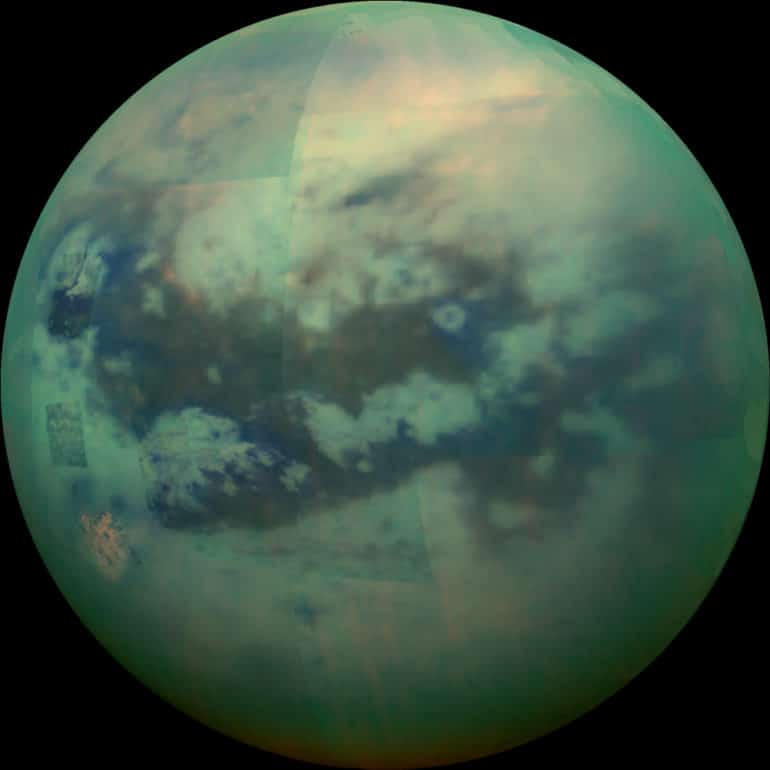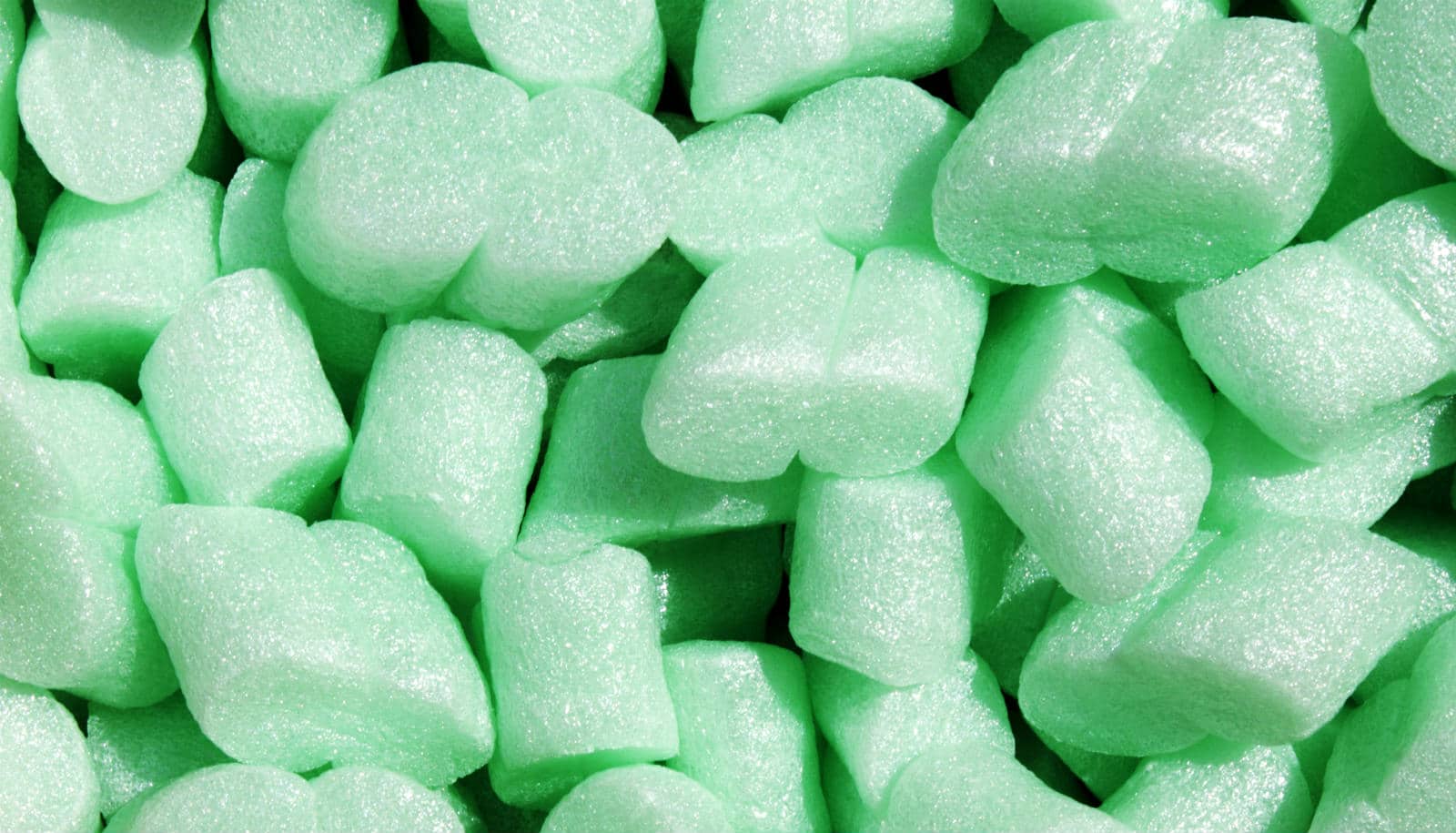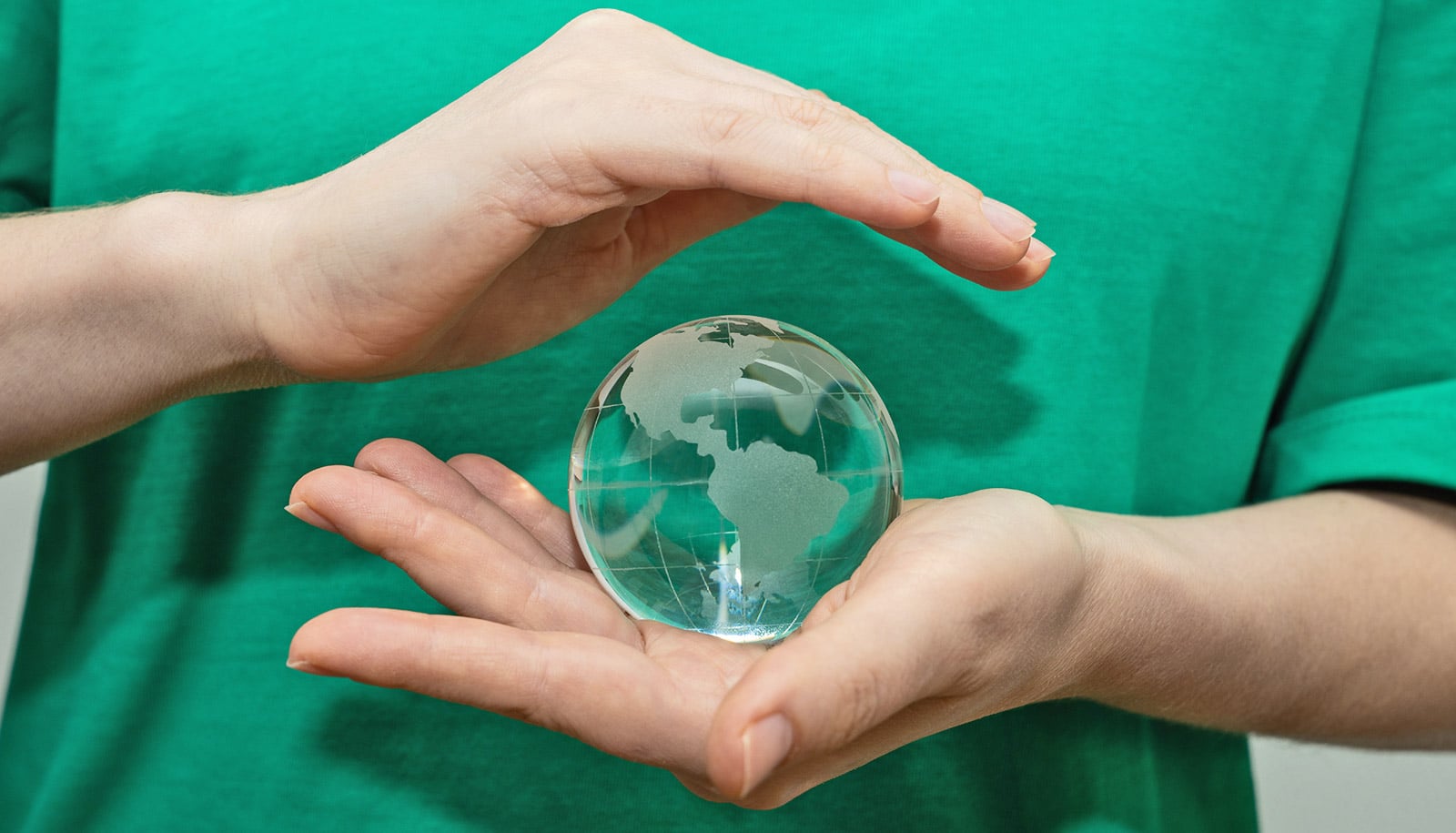Particles that cover the surface of Titan, Saturn’s largest moon, are electrically charged and can get clingy—much like packing peanuts cling to things on Earth.
When the wind blows hard enough (approximately 15 mph), the granules get kicked up and start to hop in a motion referred to as saltation. As they collide, they become frictionally charged, like a balloon rubbing against your hair, and clump together in a way not observed for sand dune grains on Earth.

“If you grabbed piles of grains and built a sand castle on Titan, it would perhaps stay together for weeks due to their electrostatic properties,” says Josef Dufek, a professor at the Georgia Institute of Technology, who co-led the study.
“Any spacecraft that lands in regions of granular material on Titan is going to have a tough time staying clean. Think of putting a cat in a box of packing peanuts.”
“Titan is a strange, electrostatically sticky world.”
The electrification findings may help explain an odd phenomenon. Prevailing winds on Titan blow from east to west across the moon’s surface, but sandy dunes nearly 300 feet tall seem to form in the opposite direction.
“These electrostatic forces increase frictional thresholds,” says Josh Méndez Harper, a Georgia Tech geophysics and electrical engineering doctoral student who is the lead author of the paper published in Nature Geoscience. “This makes the grains so sticky and cohesive that only heavy winds can move them. The prevailing winds aren’t strong enough to shape the dunes.”
Testing it in the lab
To test particle flow under Titan-like conditions, the researchers built a small experiment in a modified pressure vessel in their lab. They inserted grains of naphthalene and biphenyl—two toxic, carbon and hydrogen bearing compounds believed to exist on Titan’s surface—into a small cylinder.
Then they rotated the tube for 20 minutes in a dry, pure nitrogen environment (Titan’s atmosphere is composed of 98 percent nitrogen). Afterwards, they measured the electric properties of each grain as it tumbled out of the tube.
“All of the particles charged well, and about 2 to 5 percent didn’t come out of the tumbler,” says Méndez Harper. “They clung to the inside and stuck together. When we did the same experiment with sand and volcanic ash using Earth-like conditions, all of it came out. Nothing stuck.”
Earth sand does pick up electrical charge when it’s moved, but the charges are smaller and dissipate quickly. That’s one reason why you need water to keep sand together when building a sand castle. Not so with Titan.
“These non-silicate, granular materials can hold their electrostatic charges for days, weeks, or months at a time under low-gravity conditions,” says George McDonald, a graduate student who also coauthored the paper.
Visually, Titan is the object in the solar system most like Earth. Data gathered from multiple flybys by Cassini since 2005 have revealed large liquid lakes at the poles, as well as mountains, rivers and potentially volcanoes. However, instead of water-filled oceans and seas, they’re composed of methane and ethane and are replenished by precipitation from hydrocarbon-filled clouds.
Titan’s surface pressure is a bit higher than our planet—standing on the moon would feel similar to standing 15 feet underwater here on Earth.
“Titan’s extreme physical environment requires scientists to think differently about what we’ve learned of Earth’s granular dynamics,” says Dufek. “Landforms are influenced by forces that aren’t intuitive to us because those forces aren’t so important on Earth.
“Titan is a strange, electrostatically sticky world.”
Researchers from the Jet Propulsion Lab, University of Tennessee-Knoxville, and Cornell University also coauthored the paper.
Source: Georgia Tech




